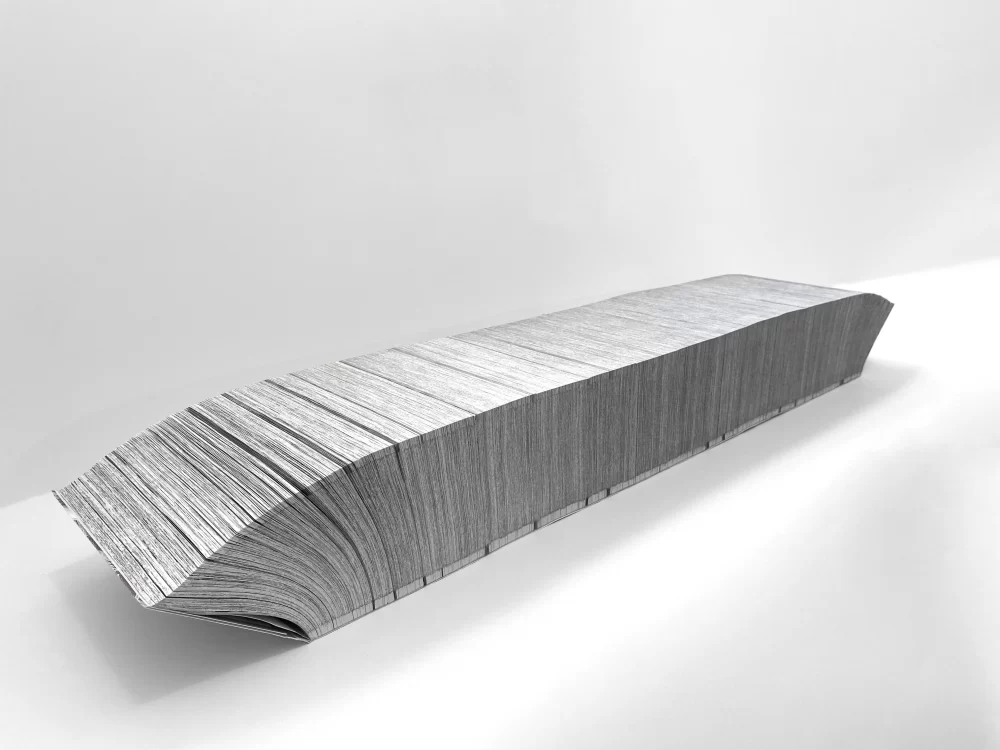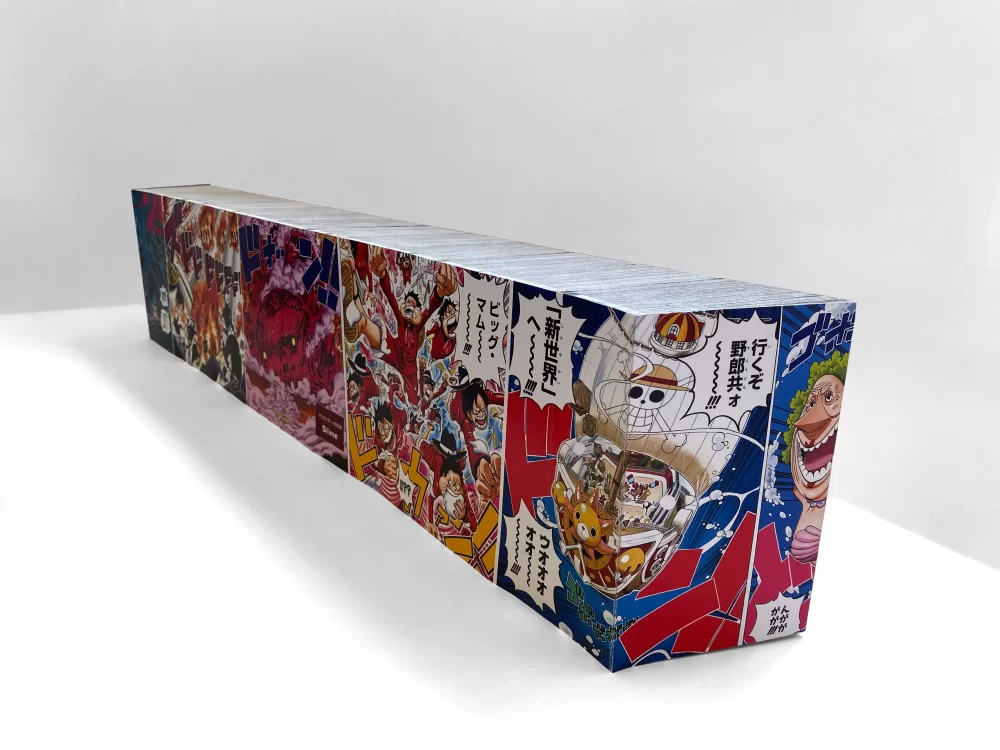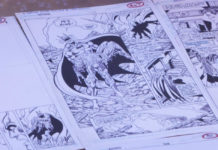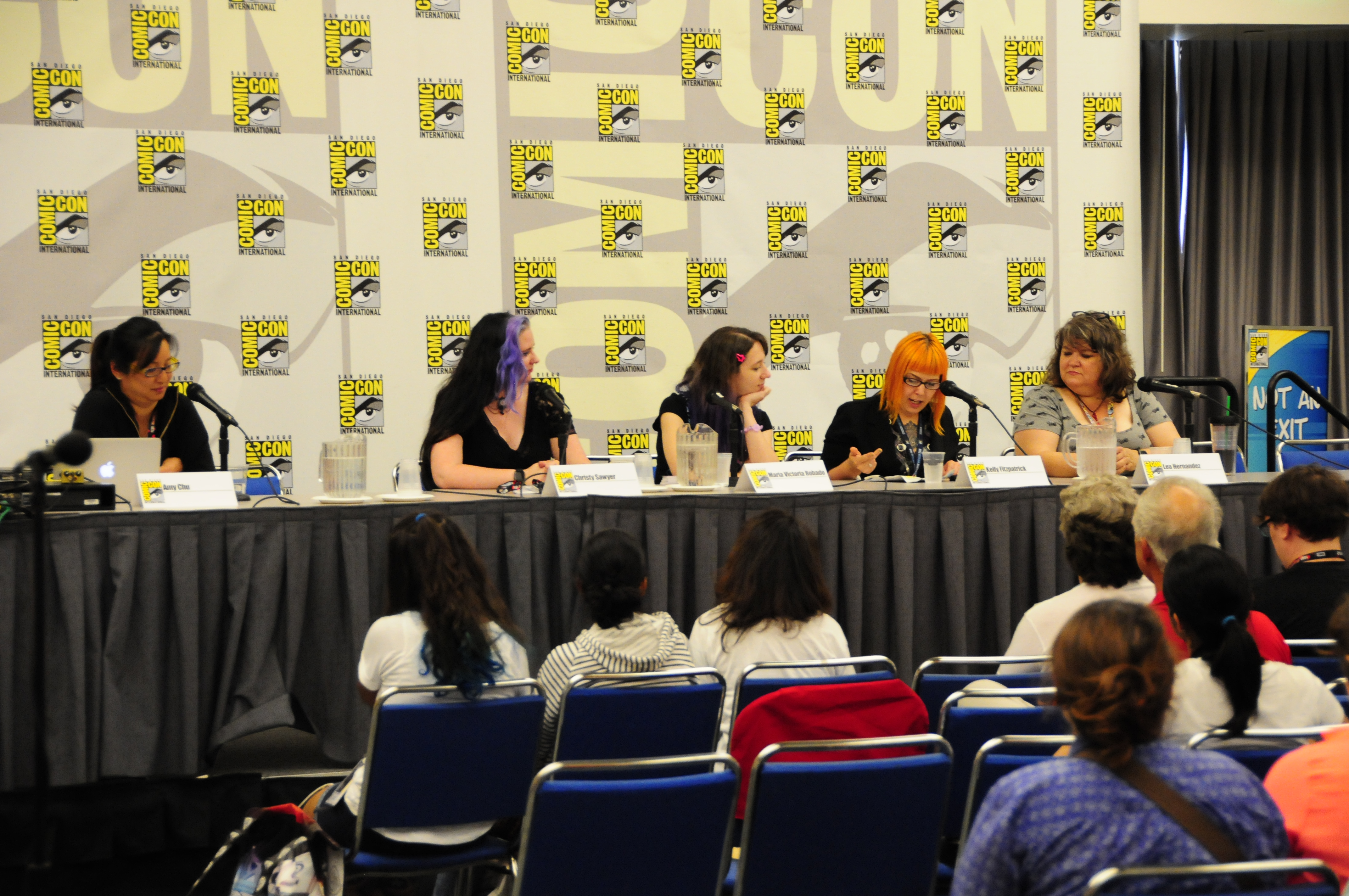The conceptual artist Ilan Manouach has turned every volume of Eiichiro Oda’s popular ongoing manga One Piece into what is now reportedly the world’s biggest book, dubbed (naturally) ONEPIECE.
Coming in at 21,450 pages contained within a single bound spine (and a slipcase), this conceptual artpiece is 31.5 inches (80cm) wide and weighs 36lb (16.5kg) – that’s about the width of a standard Billy bookcase from IKEA including the frame.
According to Guinness World Records, the longest book – at least defined by characters – is a 1912 novel by Marcel Proust which was 9,609,000 characters long. At 500 words a page, that would mean it was roughly 19,218 pages long.
ONEPIECE was produced in a partnership with JBE books and bound by Elise De Maio. A very limited number of fifty editions of the book exist – and each is signed and numbered by the artist. They don’t come cheap, however, as getting one will set you back €1900 (roughly US$1925) before shipping, which is also sure not to be cheap.
The intent of ONEPIECE seems to be to physically realise the idea of an enormous comic run that is widely read digitally, either through legal digital outlets or illegally through scanlation sites, as well as in smaller volumed instalments.
Here is the PR:
“Digital comics are at the pulsating center of a global, entertainment industry. Online participatory culture and the medium’s new networked possibilities have intensified the nature of comics beyond the scope of professional, established expertise with new and disruptive forms of entrepreneurial fan culture. Readers scan, translate and distribute online their favorite manga series. ONEPIECE is a product of this expanded digital production belt.
“The profusion of available online content and the rampant digitization of the comics industry, challenges the state-of-the-art of comics craftsmanship. Ilan Manouach’s ONEPIECE proposes to shift the understanding of digital comics from a qualitative examination of the formal possibilities of digital comics to a quantitative reappraisal of “comics as Big Data”. ONEPIECE initiates a “computational turn” in comics contributing to the formation of new areas of practice, expanding the ever-growing artistic toolbox allowing artists to think comics in different scales and temporalities.
“Comics are dual objects. They have a use value–for readers– and an exchange value for collectors. Although these two functions are not operating along a clear-cut divide, they sometimes run opposite to each other. ONEPIECE intensifies this duality as it can only be contemplated as a material instantiation of digital comics’ very own media-saturated digital ecosystem. ONEPIECE exists only as an object of pure speculation.”
Ilan Manouach is a multidisciplinary artist and researcher whose interests include conceptual and post-digital comics. Among his (controversial) works and achievements include Shapereader, an experimental tactile graphic communication system (or comic) for artists with visual impairments; Katz (2015), an exact copy of the French edition of Art Spiegelman’s Maus with all the characters redrawn as cats; and Tintin Akei Kongo (2015) which translates the infamous Tintin in the Congo by Herge into the official Congolese language Lingala.
Eiichiro Oda’s One Piece pirate manga is a phenomenon that debuted in Weekly Shonen Jump in July 1997. Now in the early phases of the final arc, One Piece is currently at 1059 weekly chapters. Last year the collections (tankōbon volumes) passed volume 100 and as of August 2022 it was announced that the manga had passed another mammoth milestone: over 500 million copies of the series was in print worldwide, making it the best-selling manga of all time. Last month the 103rd volume debuted in Japan – though presumably only the 102 French releases were compiled into ONEPIECE – and the fifteenth One Piece animated movie, One Piece: Red, released in Japanese theatres becoming one of the top 100 grossing Japanese movies of all time.











thanks for info
Comments are closed.